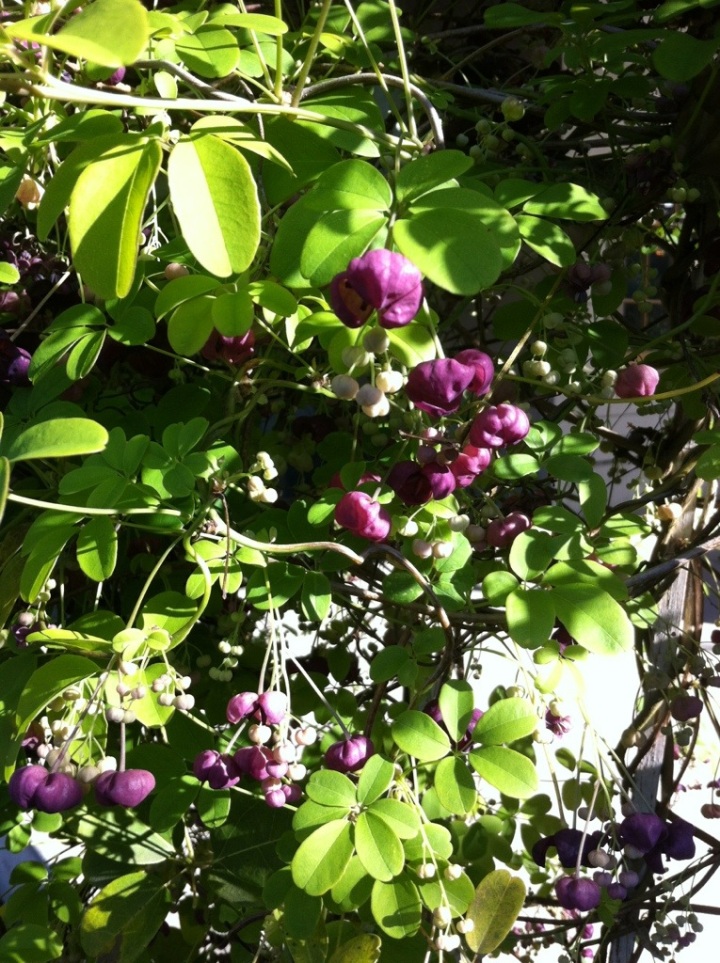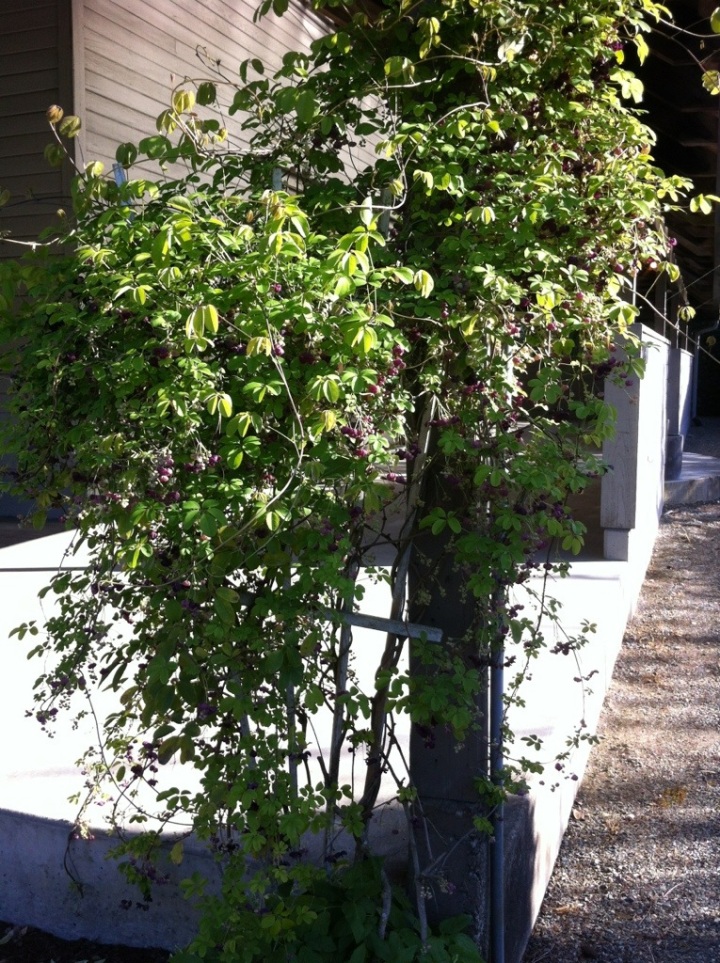I’ve never met an Akebia I’ve liked. When I see them they aren’t very friendly. Twisting away, with a careless attitude. Floppy, struggling with health, spotty. Until this April when I saw the soft and secret flowers hiding under the five leaves. They were in shades of violet and white butter cream. Bursting open towards the spring sunshine. A lovely surprise. I was also surprised to read that the Akebia vine produces edible fruit, sausage shaped and purple, but only with cross pollination from another Akebia. Some reports say that the fruit tastes like tapioca. Akebia vine needs pruning to keep it in check. It can grow rapidly and cover fences and other plants. It can be invasive in moist and happy conditions, with not too much heat or too much cold. Several cultivars are available, ‘Alba’ has white flowers and fruits, ‘Rosea’ has lighter purple or lavender flowers, ‘Silver Bells’ has white flowers also and ‘Variegata’ has pale pink flowers and white variegated foliage. Akebia quinata is native to central China, Korea and Japan.
I recently came across some fascinating information on the subject of vines in the book Tropical Nature by Adrian Forsyth and Ken Miyata. Some tropical vines, such as liana, can reach 3000 feet long! I can’t even begin to comprehend a vine growing just over half a mile long. The tallest trees on earth are in the neighborhood of 300-400 feet. “The rain forests of the foggy temperate coasts are heavily laden with mossy epiphytes but the trees are free of vines. Vines such as wild grape, Smilax brambles, bittersweet and Virginia creepers penetrate well into Canada, but only as sprawlers in open habitats. Temperate zone vines are weedy species absent from tall forests even thought the rough bark of many temperate trees offers abundant holdfasts. Tropical warmth and moisture may be more critical to the success of vines than they are to the epiphytes. In the humidity and mild warmth of the lowland tropical rain forest, there is a lack of such environmental constraints.” So vines are free to grow in the tropics because of favorable conditions, I wonder what an Akebia would do there?
Just the Facts
Akebia quinata Fiveleaaf Akebia
Semi-Evergreen
Length 15-30 ft (4-9 m) Needs support as a climber or can be used as a ground cover
Zones 4-8
Sun or Shade
Fast growth in mild regions, more slowly with cold winters
Considered invasive in moist or warm areas
Purple Flowers, Edible fruit


Very nice! I’ve been considering one for several years but not completely sure of the spot I want to put it. I bet it is something that is not good to move once planted. I did not know about all of the color variety.
Vines are great, I think people should use them more in the garden. Do you have any other vines?
Mostly clematis at my current garden. I’ve also had star jasmine and trumpet vine at previous residences. This year I’m trying the annual vine ‘Spanish flag.’ Can’t remember the botanical name…
I tried growing one several times with no luck but that is OK as they can become quite invasive I guess here with the seeds moving all over….nice profile.
Yes, you don’t want invasive in the garden, that means hours and hours of work!
I’ve never seen these, but they do look lovely.
I like the five leaf pattern, it’s really attractive.